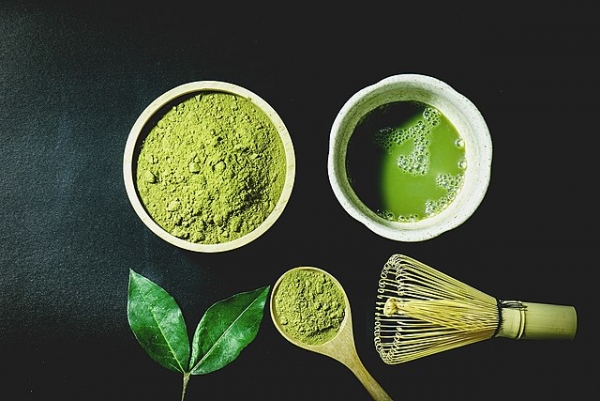What’cha drinking today? History, health benefits, and ways to pair green tea

Green tea has had a long history in Japan, dating from the Kamakura Period (鎌倉時代 Kamakura-jidai). Today, it is one of Japan’s most iconic drinks. This month we’ll be posting a two-part dive into the world of green tea, building upon the content of our previous article, What’cha drinking today? Green Tea, the icon of Japanese drinks, published last year. That article looked at the forefather of Japanese green tea, Myoan Eisai (明菴栄西), the role of tea ceremonies by the samurai, and the rise of Uji tea. This article will look at the history of green tea in Japan before Myoan Eisai, the health benefits of green tea, and recommend some great foods to pair with a fragrant cup of green tea.
The earliest traces of green tea in Japan

The diplomatic envoys to China would leave via different routes, but it would typically be out from Nagasaki. (Image credit: Brionies)
During the Asuka Period (飛鳥時代 Asuka-jidai) and Nara Period (奈良時代 Nara-jidai) from 538–794, Japan maintained close relations with China’s Sui and Tang dynasties. Japan sent diplomatic envoys to China called the kenzuishi (遣隋使 diplomat to the Sui) and later the kentōshi (遣唐使 diplomat to the Tang), alongside aristocrats, priests, and monks who were tasked with importing Chinese culture and lifestyles to Japan, including practises such as Buddhism, and—you guessed it—tea.

At first glance, this might look like some alien plant, but it’s actually just a block of compressed Chinese tea. (Image credit: Jason Fasi / CC BY 2.5)
Two priests were widely credited for bringing tea back to Japan—Saichō (最澄) and Kūkai (空海) were part of Japan’s last envoy of kentōshi to China in 804. When tea was first brought to Japan, it came as kin’atsucha (緊圧茶 compressed tea), where one would need to cut a portion of the kin’atsucha, boil it in hot water, and then serve it. Saichō was said to have planted some of the tea seeds he brought back at the foot of Mount Hiei (比叡山 Hiei-zan). This garden still exists today, known as Hiyoshi-chaen (日吉茶園), in Shiga Prefecture (滋賀県 Shiga-ken) and is thought to be Japan’s oldest tea garden.

The first Japanese emperor on record to have drunk green tea. (Image credit: 御物)
The oldest official record of tea drinking in Japan is when a Buddhist monk, Eichu (永忠), served tea to Emperor Saga (嵯峨天皇 Saga-ten'nō) in 815. The emperor enjoyed the beverage and encouraged the growing of tea plantations, helping tea gain popularity amongst the aristocrats at the time. Unfortunately, towards the end of the 800s, the then-ambassador to China, Sugawara no Michizane (菅原 道真), decided to cancel diplomatic envoys and visits to China, which then led to the eventual decline of tea consumption. It was only until Myoan Eisai brought tea back to Japan again from China in the late 12th century did tea begin to gain its current popularity. So in an alternate history, it would have been entirely possible for tea culture in Japan to have died out during the 800s, never to make it to its iconic status today.
Healthy reasons to drink some green tea

While the beverage looks simple and clear, there’s more than meets the eye. (Image credit: Neo / Unsplash)
We’ve highlighted this before in our previous article, but green tea always shows up on good things to eat or drink in order to lose weight. We looked into how one of the key chemical compounds in tea is catechin, which is said to reduce blood glucose levels and increase body weight loss. Today, we’ll look into two other oft-cited chemical compounds that modern scientific analysis believe are beneficial in the consumption of tea: caffeine and l-theanine.
I’m sure you’re no stranger to what caffeine is, and there’s also the ever-running debate of tea vs coffee. I’m going to throw my hat into the tea side of the debate, because tea is actually a more stable and appropriate source of caffeine than coffee is. In fact, in 235ml of green tea, there is around 25–29mg of caffeine, this is compared to 95–165mg in an equivalent-sized cup of coffee. While caffeine might be good for giving you energy and keeping you awake, too much caffeine can give people jitters or cause insomnia. Thus, green tea provides just the right amount of caffeine for you to reap its benefits, but not too much that you’ll feel the side effects. Caffeine is also probably why the monks actually used green tea as a sort of energy rejuvenating medicine back in the 800s.
The second chemical compound is l-theanine, a type of amino acid that helps to soothe your mind. L-theanine increases dopamine production in your brain, which creates a calming and soothing effect that helps to combat anxiety. You might then wonder, isn’t this the direct opposite of caffeine? Won’t they cancel each other out? Interestingly, no. In fact, scientists have discovered that l-theanine and caffeine produce synergistic effects that improve brain activity, while keeping it calm. So this is another +1 for green tea.
Great things to go with green tea
Another interesting fact is that the three aforementioned compounds are what gives green tea its harmonious taste: l-theanine gives umami, caffeine gives bitterness, and catechins give astringency. The level of each component also differs based on the preparation method of the tea, allowing it to be strong or subtle tasting, and accentuates the tastes of different foods.
Here are some interesting foods to pair green tea with:
Japanese curry
Best paired with Cold Fukamushi Sencha

(Image credit: Samia Liamani / Unsplash)
Everyone loves Japanese curry (カレー karē)—it’s rich and brimming with umami, but that may become overwhelming at times. By drinkings some fukamushi sencha (深蒸し煎茶 deeply-steamed simmered tea) that also has a strong taste, you can change the taste on your tastebuds and ensure that the taste of the tea isn’t overshadowed by that of the curry. In fact, the fukamushi sencha has a sweet and rich taste that is further accentuated by the spices in the curry. If you drink a cold cup of fukamushi sencha, you can enjoy a difference in taste and temperature that makes it extra refreshing as you alternate between downing the curry and sipping on the tea.
Chocolates
Best paired with hōjicha, sencha, or matcha

Everyone’s favourite chocolate souvenir from the airport. (Image credit: sirooziya / CC BY-SA 3.0)
With so many flavour combinations of green tea and hōjicha (ほうじ茶) chocolates from KitKat and Royce, it comes as no surprise that these two go really well together. However, if you want to take your enjoyment to the next level, how about pairing some chocolates with actual green tea? Here are some of our recommended combinations: dark chocolate & hōjicha, milk chocolate & sencha (煎茶), white chocolate & matcha (抹茶), and nama chocolate (生チョコ) & matcha. The different aromas or astringency of each tea help to complement the nature of the chocolate that it is paired with.
Cheeses
Best paired with hōjicha, sencha, fukamushi sencha, or matcha

(Image credit: Aliona Gumeniuk / Unsplash)
While pairing wine with cheese is a no-brainer, few know that cheeses complement greatly with green tea. The savouriness and richness of the cheese work well with the sweetness and bitterness of the green tea. Here are some of our recommended combinations: blue cheese & sencha, smoked gouda & matcha, cheddar & hōjicha, and camembert & fukamushi sencha. Of course, there are many different types of cheese and green teas, so be sure to try to mix and match some of your own to discover your favourite.
Enjoying a relaxing cup of green tea

There’s always something enchanting about the order and symmetry of Japanese tea plantations. (Image credit: Barryvalder~commonswiki / CC BY-SA 3.0)
Now, when you hear someone say “Let’s relax over some green tea”, you actually have a better idea of why that is. While green tea might have originated from China, Japan has given its own twist on it with different methods of cultivation and preparation. Something that might be rather confusing for the uninitiated, so be sure to check out the second part of our two-article series where I’ll briefly share about the different types of green teas and tea-growing areas, to finally get a grasp on all the different terminologies.
This article is written in collaboration with the Ministry of Agriculture, Forestry and Fisheries (MAFF) of Japan.
For more information on Japanese food and ingredients, please visit https://tasteofjapan.maff.go.jp/en/.
Header image credit: dungthuyvunguyen





